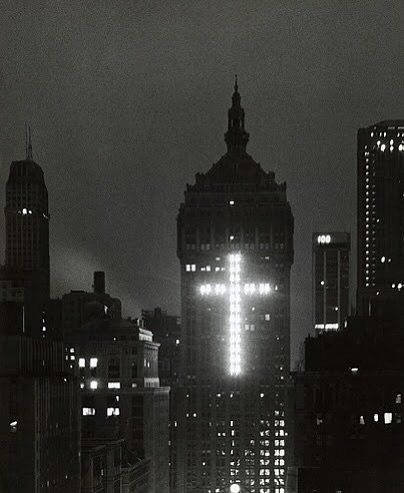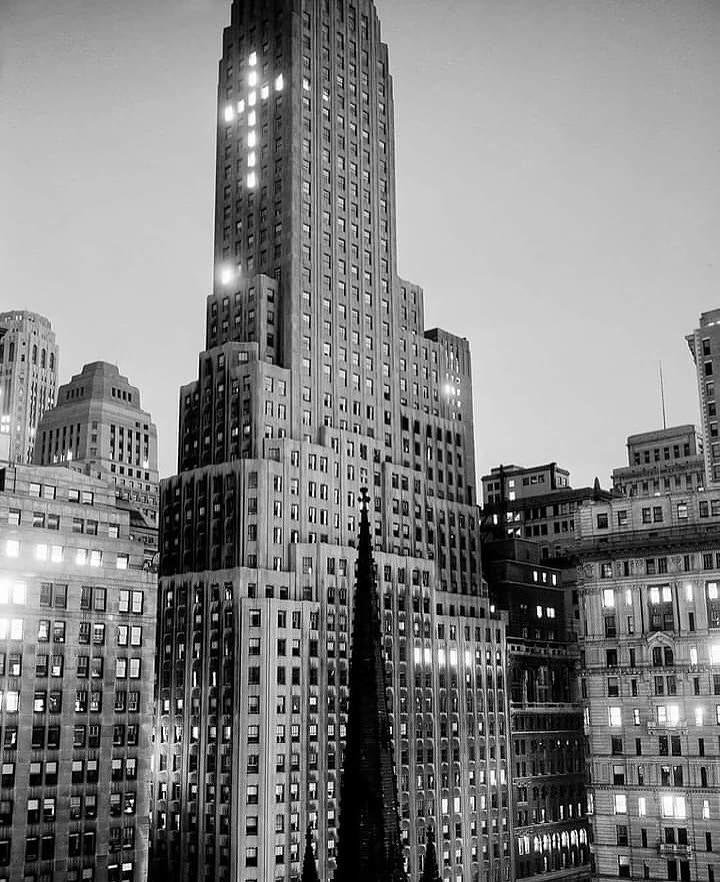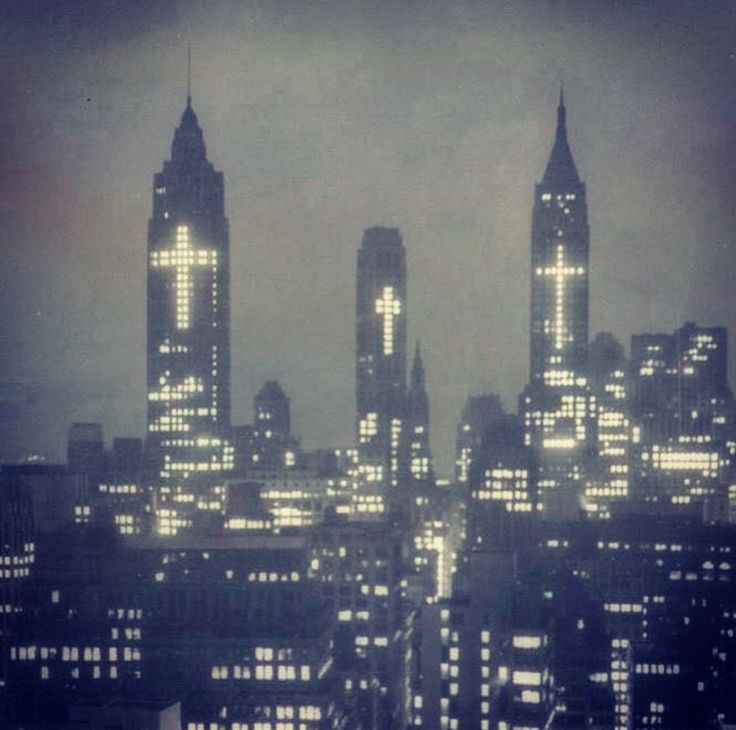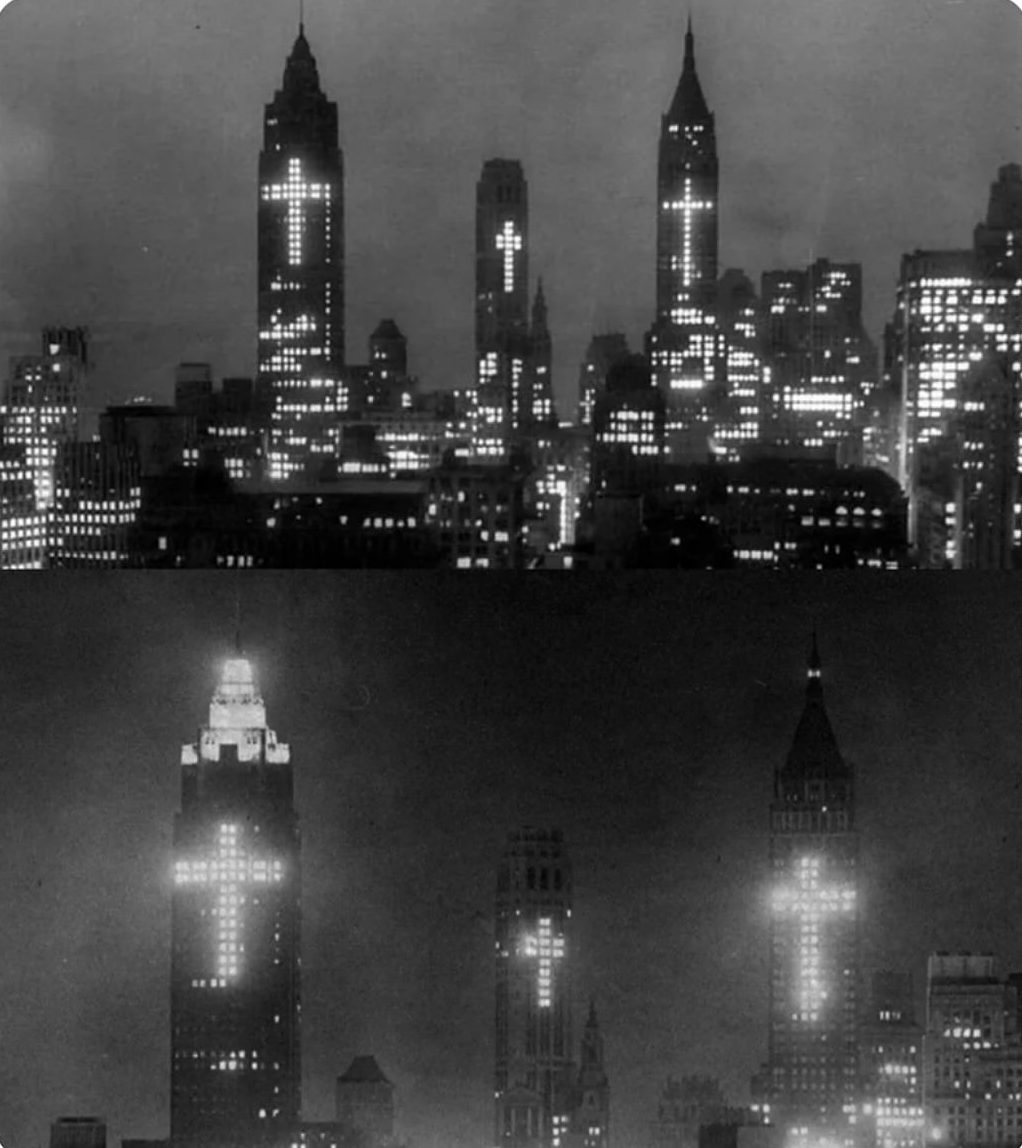New York City Lit Up Massive Glowing Crosses on Skyscrapers to Honor Good Friday in 1956
If you had looked out across the Manhattan skyline on the night of Good Friday in 1956, you would’ve seen something breathtaking—an entire city glowing with symbols of sacrifice. It wasn’t just a church bell tolling or a quiet candlelight vigil. No, New York City marked that night in a way only it could: by lighting up its skyscrapers with enormous, luminous crosses. Floor after floor of dark windows were suddenly interrupted by rows of light—painstakingly arranged to form towering Christian symbols that stretched stories high into the night sky.

To modern eyes, this might feel surprising. New York is often portrayed as fast, secular, and unshakably modern. But in the 1950s, the city—and the country—was steeped in a different rhythm. Public displays of faith weren’t just accepted; they were celebrated. Churches were full, holidays were sacred, and events like Good Friday held national meaning. What happened in 1956 wasn’t a one-time publicity stunt. It was the culmination of a movement that had started years earlier—a quiet tradition of reverent display becoming more and more visible across the city skyline each spring.
The effort was more coordinated than you might think. Groups like the Catholic Action Committee and the Fire Department’s Anchor Club helped lead the charge. In a remarkable show of civic cooperation, building managers, electricians, and maintenance crews worked together to identify which office windows could be illuminated in perfect vertical and horizontal lines. Each cross took careful planning—ensuring the floors matched up, that lights could be turned on or off without disrupting building function, and that the image would be crisp enough to be seen from afar.
Some of these crosses stretched nearly 150 feet tall, glowing symbols that floated among the city’s most iconic structures. These weren’t digital signs or projections. This was analog faith—real rooms, real lightbulbs, real people flicking switches on and off to make the shape of a cross shimmer into view.
Newspapers like The Tablet documented the effort over the years, particularly between 1951 and 1956. In black and white photographs now preserved in archives and online history collections, you can see the crosses glowing on buildings like the RCA Building, the Daily News Building, and others along Park Avenue and beyond. They were visible to anyone looking up from Midtown or peering across the East River—simple, stark reminders of a sacred story.

The images evoke something deep. There’s power in seeing a city as big and brash as New York stop and turn its face toward heaven, even for a moment. These glowing crosses weren’t just art; they were acts of reverence, woven into the very steel and concrete that made the skyline iconic. And unlike digital billboards or commercial LED shows today, these displays weren’t sponsored or monetized. No logos. No slogans. Just light and silence on a holy night.
It’s hard to imagine this happening in quite the same way today. Not because faith has vanished, but because the cultural moment has shifted. Public displays of religion—especially on such a massive, civic scale—now come with more scrutiny. The line between church and state, once fluid and flexible in public life, has become far more defined. But that doesn’t make the image of 1956 any less powerful. In fact, it might make it more so.
The Good Friday crosses lit in New York didn’t demand anything. They didn’t shout. They didn’t ask for applause. They just existed—for one night, flicked on by quiet hands in high-rise hallways. And for those who looked up, they served as a reminder of a sacrifice that transcended politics, nationality, or time.

New York City is often described in terms of its noise, its motion, its relentless forward drive. But that night in 1956, it also knew how to be still. How to let light speak. The same city that hosted Broadway shows and Wall Street trading floors paused long enough to remember the crucifixion of Jesus Christ—not through sermons, but through skyline.
It’s easy to overlook moments like these in our fast-moving world. But they matter. They remind us that behind every cityscape are people—people who believe, who mourn, who honor traditions, and who find ways to reflect faith through architecture and community effort. A lit window might seem small, but when arranged with others, it becomes something much greater. It becomes a statement.
For many who were there, the sight stayed with them forever. It became part of their spiritual memory, like hymns sung in childhood or the sound of church bells on Easter morning. And for those who see the photos today—grainy and glowing, black and white but timeless—there’s something undeniably moving in the simplicity of it all.
A city as loud as New York doesn’t often whisper. But in April of 1956, it did. And it did so with light.

Daniel Reed is a curious mind with a passion for breaking down how the world works. With a background in mechanical engineering and digital media, he turns complex ideas into easy-to-understand articles that entertain and inform. From vintage tools and modern tech to viral internet debates and life hacks, Daniel is always on the hunt for the “why” behind the everyday. His goal is simple: make learning feel like scrolling through your favorite feed — addictive, surprising, and fun.
